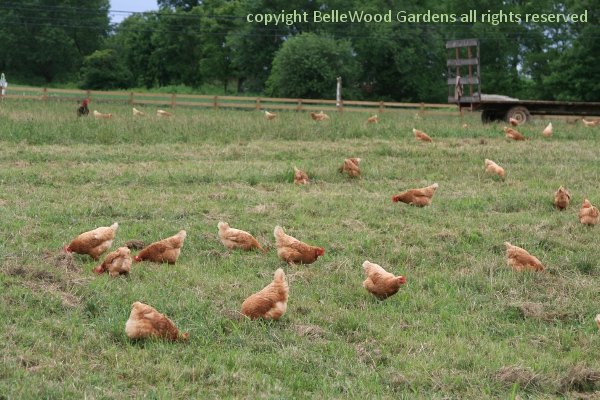
.
If you have any comments, observations, or questions about what you read here, remember you can always Contact Me
All content included on this site such as text, graphics and images is protected by U.S and international copyright law.
The compilation of all content on this site is the exclusive property of the site copyright holder.
Thursday, 25 July 2013
Livestock at the Lima Family Farm
Mention "farmers market" today and many (if not most) people equate it with a green market, one that sells produce and flowers, possibly eggs, maybe preserves and pickles. Is that all there is? No.
What about livestock? The eggs came from chickens. The birds are easy to keep and a dozen eggs from free range pastured chickens are so much better than the anemic offerings found in a supermarket. Eggs are a step up from growing vegetables, for the backyard gardener or a farmer. While there are dual purpose breeds these days chickens are selected either for superior egg laying capabilities or rapid weight gain on meat birds. It's the care needed in handling dairy and meat. Milk, making cheese, and the slaughter and processing of meat are much more regulated than picking tomatoes or corn.
I noticed, when I was at the Frenchtown Farmers Market on Sunday mornings, that the Lima Family Farm has not only produce, but also meat for sale. I spoke to the people at the stand, telephoned John, and got permission to come and visit. "Talk to Anita." he said. "She'll take you around and explain things." Which made it a delightfully informative, entertaining morning.

The family sells at a couple of farmers markets and also have a farm stand on the place, which is open Thursday and Friday afternoons from 2:00 to 6:00 p.m. and all day Saturday and Sunday from 10:00 a.m. to 4:00 p.m. The entrance is well marked off Amwell Road in Hillsborough, New Jersey. Long driveway, with the pastured, egg laying hens busily scratching around in the grass for yummy bugs and grubs and other treats to eat. All their livestock, I learned - beef, pork and chicken - is grass-fed and they do not treat their animals with antibiotics or hormones.
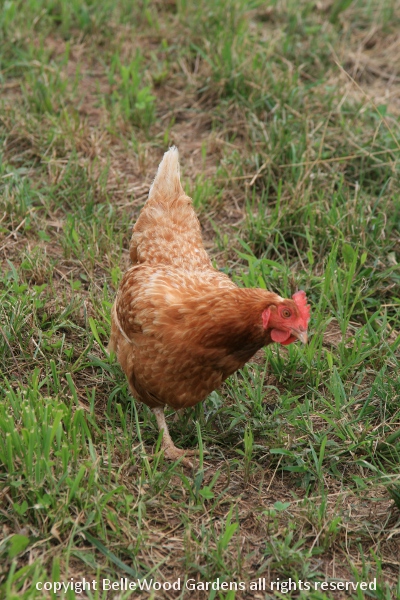
These hens are lighter in color that the rich russet feathering I expect of Rhode Island Red chickens. Perhaps they're New Hampshire Red, whose hens are also excellent layers of large brown eggs.

Anita brings a Gator / golf cart around and off we go, bumping across the fields to see the other animals. First stop: chicken "tractors" for the Cornish Cross meat chickens. This is the standard breed for meat production. They bulk up very quickly and are ready for slaughter in less than 2 months. These tractors give them time out on the grass. There are sturdy wheels attached to the frame, and the tractor can be pulled to a fresh area of pasture. They produce 50 birds a week.
Full disclosure: I bought a 5 1/4 pound chicken from their refrigerator case and roasted it for dinner. Moist, juicy, and delicious.

With that kind of production schedule the farm needs an efficient setup to bring new birds along as scheduled. And they do. There's a large building, open at both ends at this time of year. Inside the building are four sizeable pens with ample room for the chicks before they are put out to grass. The space is bright and light, with several feeders and waterers. This group is nicely feathered.

.
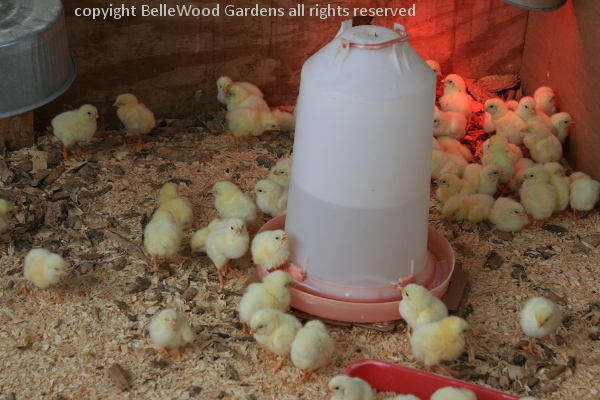
No doubt there's a technical term for it but I'll just call this the "peep" stage. Little yellow fluff balls, peeping about, eating and drinking. Even though it's late July and they're inside a building notice the heat lamp in the upper right. The chicks can warm up, cool off as they need to stay comfortable.
"Do you want to see the pigs?" asks Anita. Of course, and off we go across another field.
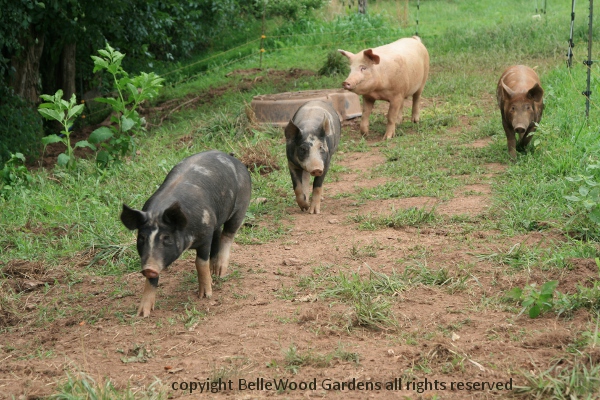
A couple of muddy wallows, access to a nice shady wooded area, and a good-size field to rummage around in. Almost a reflex, I shout "Sooey! Pig, pig, pig!" and here they come trotting over to us. I'm embarrassed. I don't have any treats. But the pigs don't care and start munching on some grass.

They have a big tub, filled with rather muddy water. It would be cleaner, I later find out, if the pigs didn't actually climb into it when they feel hot. Pigs don't sweat, and hot weather can be deadly. That's why they love muddy wallows. And their water tubs.

.
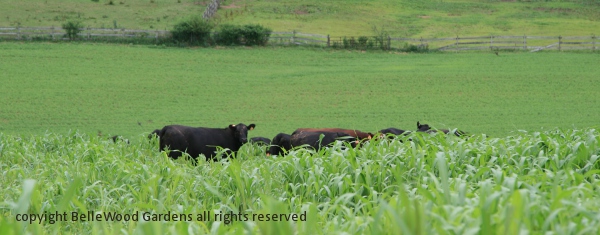
These are the momma cows with calves. "Better not to get too close." says Anita. "They can be dangerous." Never bother mothers with their babies. Their protective instincts can kick in. A distant view is just fine. Besides, I've seen cows before, but they're in a field with a huge area of rather scrawny looking corn. What's this about?

Turns out that this is grazing corn, for the cows to eat. Now, turning livestock into a field after harvesting grain is nothing new. It's sort of gleaning, by livestock or poultry rather than people. Purposely grazing standing corn is not a common practice here in the United States. Green growing corn can be a grazing resource for cattle being finished on grass. Corn is, after all, a summer annual grass. Apparently the corn should be allowed to reach the 8- to 10-leaf stage before grazing or it doesn't produce much forage. Simple electric fencing divides the strips where the cows can graze. Shift the fencing, and that moves the cows to a new area.
Correction: It's not grazing corn. It's Sudan grass, Sorghum ×drummondii, a hybrid-derived warm weather species native to tropical and subtropical regions of Eastern Africa raised for forage and grain. It performs best in years when the growing season is characterized by higher than average temperatures, and 2013 certainly qualifies. Sudan grass can be grazed any time after the plant has reached a height of 18 inches, usually 5 to 6 weeks after planting. Sudan grass grazed in its early vegetative stage contains as much available energy as corn silage and considerably more protein.
And then there are the big boys.
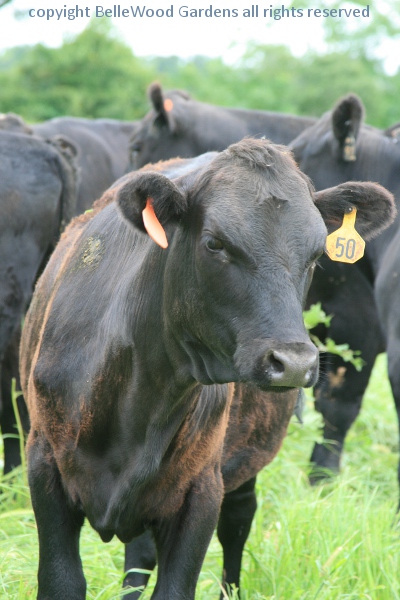
Unlike feedlot cattle with an unnatural diet of grains, confined in small pens and standing in their own poop these Black Angus steers are grazing on grass, wandering in a field, leading a pleasantly bovine existence. Yes, they'll be slaughtered for meat but up until then they'll have a happy life.

Back to Top
Back to July 2013